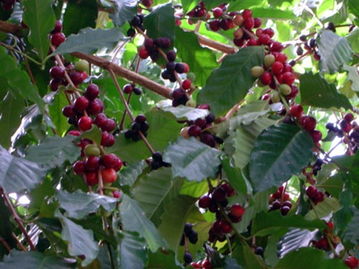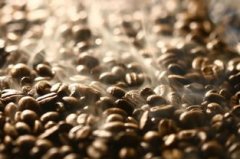Basic knowledge of Coffee Coffee Tree Classification and growth picking period

Coffee tree belongs to the evergreen tree of Rubiaceae. Since ancient times, most of the plants of Rubiaceae are plants with special effects, such as quinine tree, which is regarded as a specific drug for malaria, and Dugan, which is used to treat amoeba dysentery. Coffee is defined as the most unique alkaloid drinking flora.
The fruit of coffee is formed by the outer skin, pulp, endocarp, silver skin, and the seeds wrapped in the innermost layers (coffee beans). The seeds are located in the center of the fruit, and the parts outside the seeds are of little use. Generally speaking, there are two pairs of seeds in the fruit, but occasionally there is only one seed in the fruit, which is called fruit bean. In order to show symmetry, we call the fruit with two pairs of seeds as female beans. There are at least 40 "species" of the genus Coffee, among which the more practical cultivated species are three original species: plateau cultivation, lowland cultivation, and minimum cultivation.
Generally speaking, after two to three years of sowing, coffee trees can grow to a height of about five to ten meters, but in case coffee beans lose their aroma, taste bad, and are easy to harvest, farmers often repair them to about 1.5 to two meters. The change begins to bear fruit three to five years after sowing. The harvest period will be 20 years after the fifth year.
Coffee tree evergreen leaves, the leaf tip is more pointed, and is two opposite groups. The surface of the leaf is dark green, the back is light green, and the blooming flower is pure white. There are five stamens and one pistil in the flower, and the petals are usually five, but some have six or even eight petals. The flowers will give off a jasmine-like fragrance, but the flowers will wither in about three or four days. At first, the fruit is the same dark green as the leaf surface, but as it becomes more and more mature, it will turn yellow, then red, and finally crimson.
The circular zone at the tip of the north-south regression line, which we call Coffee Zone or Coffee Belt. Because the area is rich in rich organic matter and volcanic ash soil, the average temperature is about 20 degrees, the average annual rainfall is between 1000 and 2000mm, and there is no large temperature difference during the year, so it has become an ideal place for coffee production. Growing coffee should be strictly protected against cold, hot and dry wind and defrosting.
Important Notice :
前街咖啡 FrontStreet Coffee has moved to new addredd:
FrontStreet Coffee Address: 315,Donghua East Road,GuangZhou
Tel:020 38364473
- Prev

Coffee producing countries in Central and South America
1. Mexican coffee production is concentrated in the south near Guatemala, with mountains running through the east and west, making its mountains tilted, making it an ideal terrain for coffee cultivation. Coffee cultivation is still common. According to the order, the highland is classified into three kinds of high-yield coffee: Arudora, Prima, Rabad and Barnabad. Coffee beans range in size from medium to large grains, appearance,
- Next

Coffee flavor classification and how to roast sour coffee
Sour mocha, Hawaiian sour coffee, Mexico, Guatemala, Costa Rica high real estate, Gillimanjaro, Colombia, Zimbabwe, El Salvador, Western Hemisphere washable high-grade new beans. Bitter Java, Mantenin, Bogota, Angola, Congo, Uganda all kinds of old beans. Sweet Colombian metenin, Venezuelan old beans, Blue Mountains, Gillimanjaro,
Related
- Beginners will see the "Coffee pull flower" guide!
- What is the difference between ice blog purified milk and ordinary milk coffee?
- Why is the Philippines the largest producer of crops in Liberia?
- For coffee extraction, should the fine powder be retained?
- How does extracted espresso fill pressed powder? How much strength does it take to press the powder?
- How to make jasmine cold extract coffee? Is the jasmine + latte good?
- Will this little toy really make the coffee taste better? How does Lily Drip affect coffee extraction?
- Will the action of slapping the filter cup also affect coffee extraction?
- What's the difference between powder-to-water ratio and powder-to-liquid ratio?
- What is the Ethiopian local species? What does it have to do with Heirloom native species?

